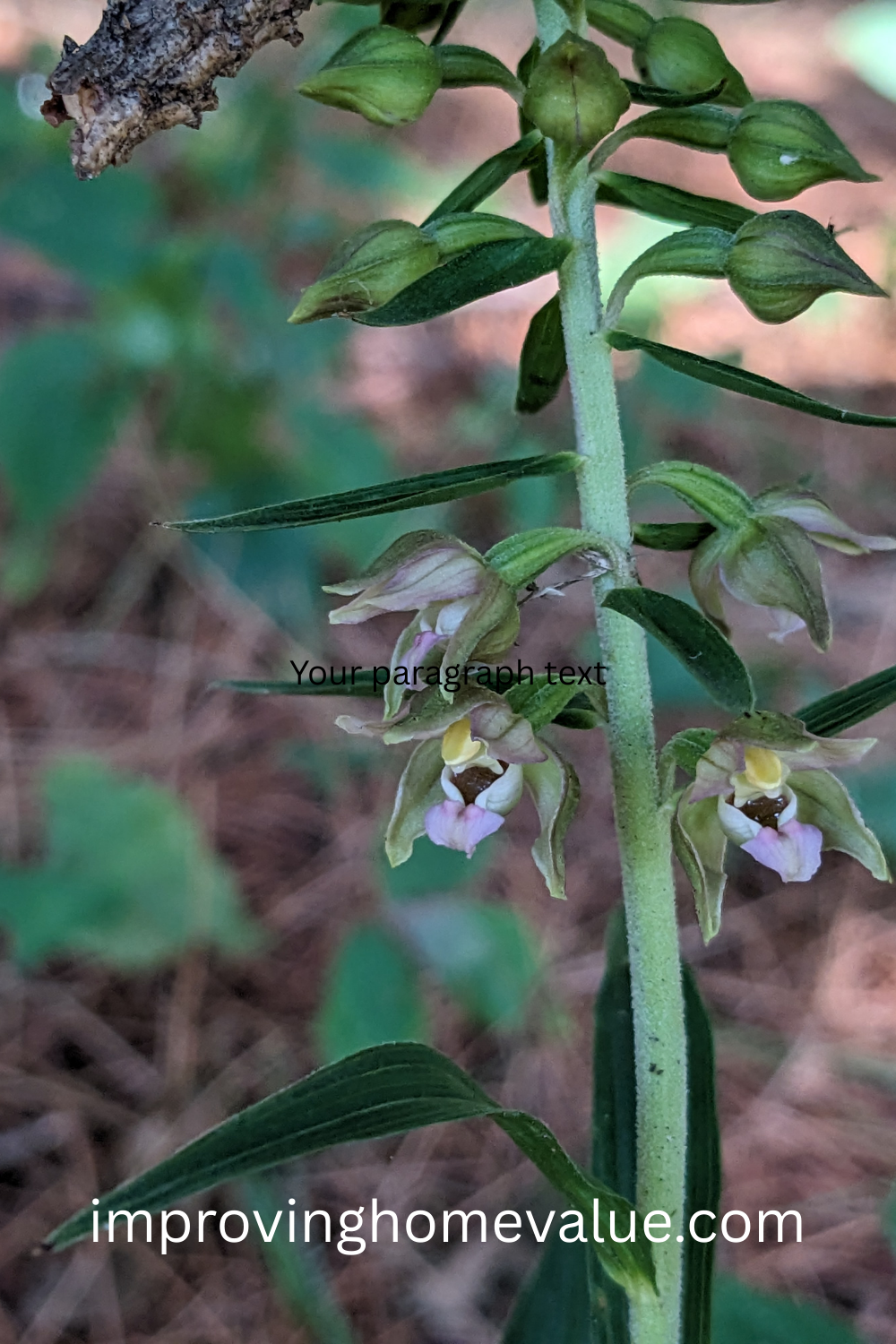Ever wondered where the enchanting Wild Helleborine orchid comes from? This beauty has its roots in Europe and parts of Asia, where it graces forests and meadows with its presence. Its wide-ranging habitat reflects its adaptability, growing in shady woodlands and open grasslands alike.
Finding these orchids isn’t a needle-in-a-haystack situation if you know where to look! You’ll usually spot them from Ireland and Britain through to western Siberia. They even pop up in North America, although they’re less common there. Imagine stumbling upon these elegances during a woodland walk.
As I have found some in my backyard this summer, they seem to prefer growing under trees and in well drained soil under pine and ash trees in Quebec, and are also found along the north eastern United States, and western part of North America.
A glance at this orchid and you’ll notice it’s not towering but stands modestly between 30 and 80 cm tall. Its flowers are the real showstopper, arranged in captivating spike-like clusters that add a touch of wild beauty to its surroundings. Each spike is a burst of nature’s artistry, inviting admiration from all who pass by.
The Alluring Blooms: Nature’s Summer Spectacle
The Wild Helleborine orchid starts putting on its real show during the summer. Right around July to September, you’re treated to a blooming spectacle that’s hard to ignore. Walking through the woods, with these orchids in full bloom, is an experience dripping with natural wonder.
Each flower spikes up like nature’s very own fireworks display, and the colors? They range from soft greens, purples, to pinks. The colors aren’t just eye candy; they play a clever role in attracting pollinators. Bees and wasps are particularly drawn to these shades, helping these orchids to pollinate and thrive.
The way these orchids organize their flowers is like a master class in elegance—each spike holding numerous buds, creating an upward spray of intricate blooms. It’s as if each bloom is trying to outdo its neighbor, with every spike a tiny competition of floral beauty.
Catching these blooms at the right time is a treat. It’s best to explore areas where they thrive in summer months, taking care not to trample them underfoot; they’re more delicate than they appear. Their blooming period, though fleeting, is a reminder of how ephemeral beauty can be—worth every moment of appreciation.

Thriving Survival: Factors Influencing Growth and Conservation
When it comes to growing Wild Helleborine orchids, location is everything. They love a humid environment and prefer the company of wooded areas or meadows. Think of places where they can enjoy a bit of checkered sunlight – they aren’t sun worshippers but they also don’t mind basking occasionally.
Now, if you’re looking to encounter these beauties, your best bets would be protected areas or reserves known for rich ecosystems where human interference is minimal. These conservation sites help maintain the delicate balance these orchids need to flourish.
Despite their resilience, the orchids face challenges from pests like aphids and slugs. These little intruders can cause havoc if undetected, munching away at the tender plants. Keeping these pests at bay is crucial for conservation efforts and for anyone keen to cultivate these orchids.
Whether you’re a conservationist or an everyday nature enthusiast, taking steps to understand and protect the Wild Helleborine is a rewarding endeavor. From maintaining their natural habitats to controlling pests, every effort helps preserve these natural wonders, keeping their captivating blooms around for future generations to enjoy.
